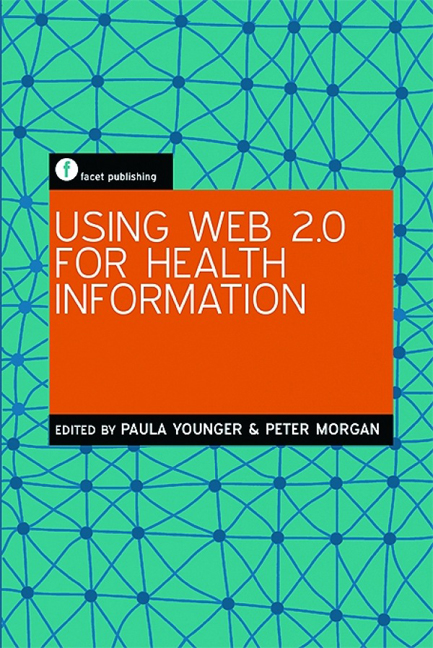Book contents
- Frontmatter
- Contents
- Preface
- Acknowledgements
- Contributors
- Glossary
- Introduction
- Part 1 The basics
- Part 2 Web 2.0 and the implications for health information
- Part 3 Web applications in health information provision: some practical examples
- Part 4 The future
- 14 Web 3.0 and health librarians: what does the future hold?
- 15 Conclusion
- Index
15 - Conclusion
from Part 4 - The future
Published online by Cambridge University Press: 08 June 2018
- Frontmatter
- Contents
- Preface
- Acknowledgements
- Contributors
- Glossary
- Introduction
- Part 1 The basics
- Part 2 Web 2.0 and the implications for health information
- Part 3 Web applications in health information provision: some practical examples
- Part 4 The future
- 14 Web 3.0 and health librarians: what does the future hold?
- 15 Conclusion
- Index
Summary
Like the printing press, telephone and television before it, the internet has changed forever the way we disseminate and retrieve information.
Both as a group and as individuals, information professionals are rich in imagination, resourcefulness and the ability to innovate, as well as the ability to adopt and adapt to new technology. All of these skills are very apparent from the many and varied examples in this book of how Web 2.0 applications are being used in healthcare information settings.
The sheer variety of the projects outlined here is also testament to the flexibility of Web 2.0 applications, with each service highlighting different features, depending on the needs of their users. Whether it is a practical application to provide information in a more timely and cost-effective manner to users and non-users alike, or a more academic approach, there is a Web 2.0 application that can be used. Some common themes have, however, emerged.
The first of these is the use of the web as a platform. Users are no longer limited to having to use applications on their desktop, laptop or netbook. Online file storage options such as Flickr and Google Docs also mean that users no longer need to rely on memory sticks or external storage. Applications such as haptics and virtual environments such as Second Life offer tremendous potential for the future in all kinds of environments, particularly health.
A second major theme is the trend towards collaborative working. Web applications such as Google Docs, wikis and blogs provide the opportunity for individuals and teams to work on documents and information no matter where they are located. If we assume that, in general, crowds have a higher level of wisdom and knowledge than individuals, then there is also the facility for members of those teams to correct erroneous information. Both information professionals and healthcare professionals are experienced in working collaboratively in multidisciplinary teams to achieve a result: it is now possible to replicate those methods of working in an electronic environment.
A third theme is the use of mobile technology, paving the way for ‘web anywhere’.
- Type
- Chapter
- Information
- Using Web 2.0 for Health Information , pp. 153 - 156Publisher: FacetPrint publication year: 2011



